The Mary Rose: A Tudor time capsule
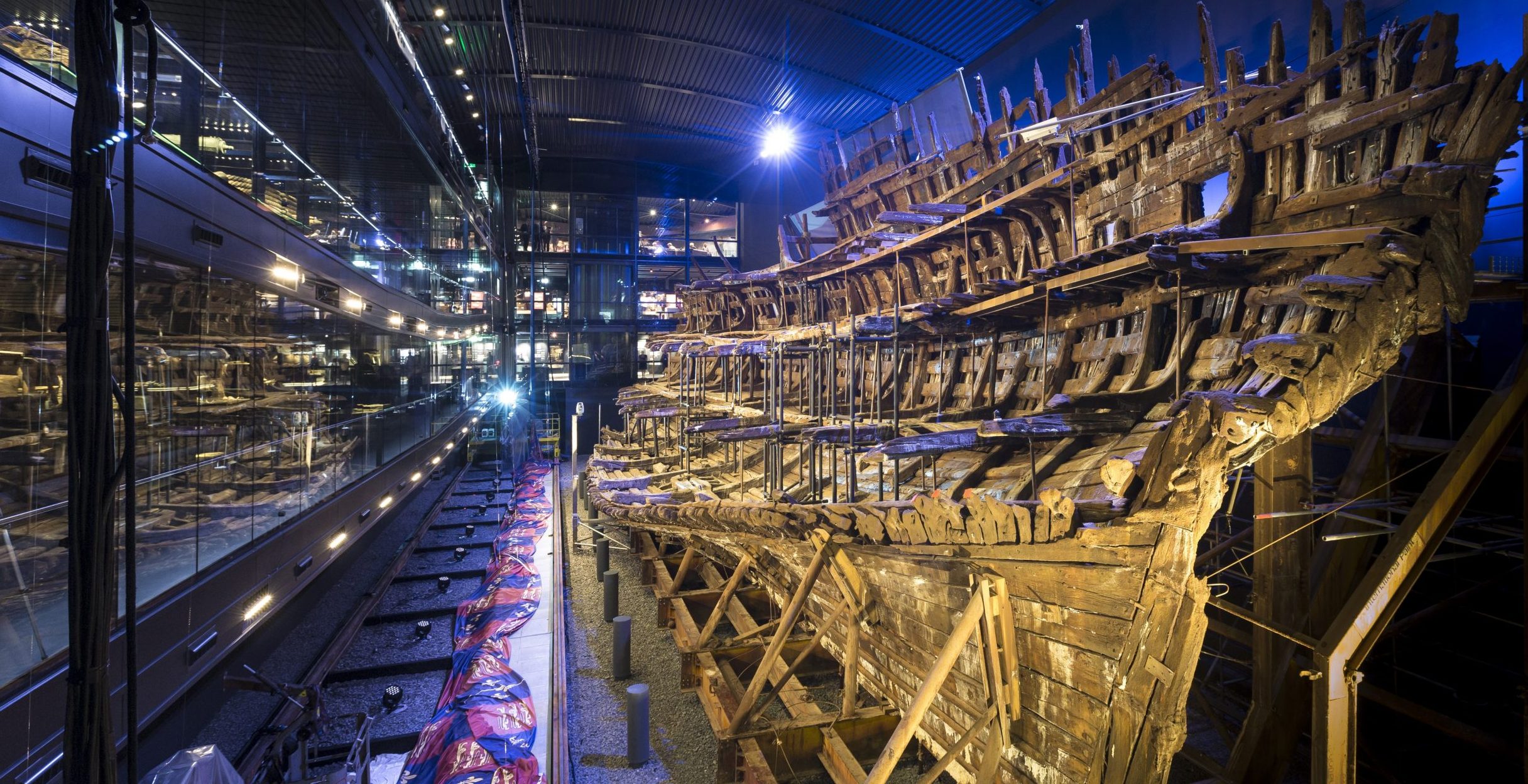
Mark Rowe tells the story of Henry VIII’s cherished ship, the Mary Rose, lost to the sea for centuries before being reclaimed and turned into an incredible visitor attraction
Words by Mark Rowe
What happened to the Mary Rose?
The year is 1545 and France has amassed a huge fleet bent on invasion along the southern coast of England. But this is the reign of King Henry VIII, stout of stature and spirit, who commands a powerful fleet which includes his beloved, formidably armed Mary Rose.
The imminent Battle of the Solent, off the coast of Portsmouth, must keep the French at arm’s length. Henry VIII won the battle but lost his ship. Today, the tale of how the Mary Rose sank in minutes, of the lives that were lost, and how, 437 years later, the ship was recovered from the Solent seabed, is revealed at an outstanding visitor attraction within Portsmouth Historic Dockyard.
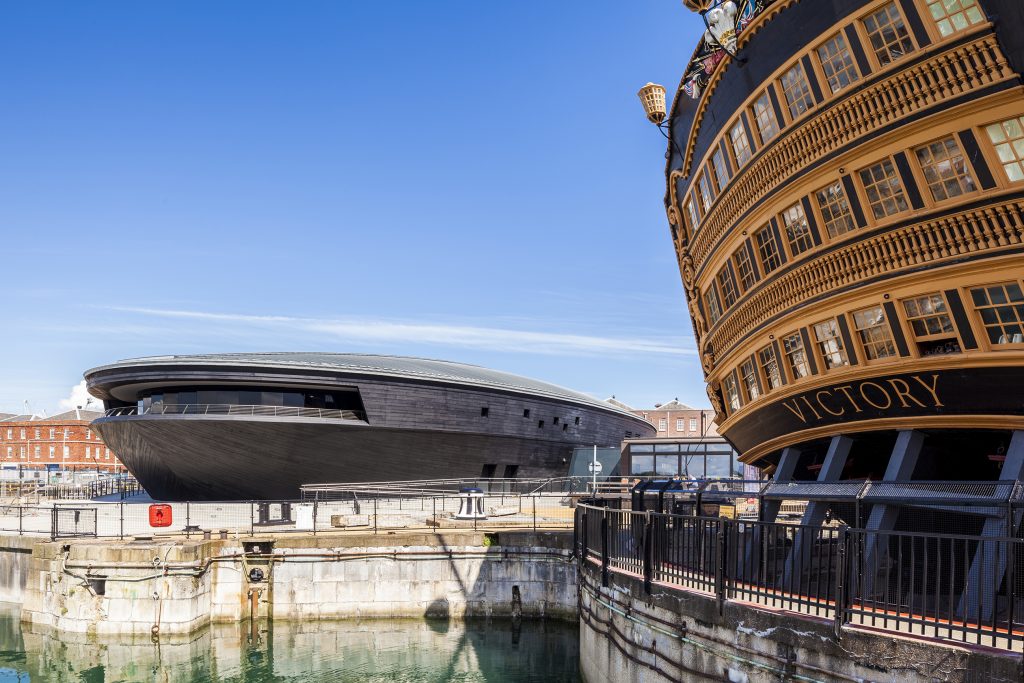
Launched in 1511, the Mary Rose swelled from a troop carrier to a fearsome, cannon-laden warship. Of the more than 500 men on board when she sank on 19 July 1545, just 35 survived.
Visit the Mary Rose in Portsmouth
The entire tour of the ship, from the wounded vessel itself to the interpretation that accompanies it, is world class – the displays are moving, serious, insightful, and occasionally entertainingly ludicrous (a hologram of a chortling Henry VIII, replete with a ballooning belly greets you after the ticket desk).

The Mary Rose is almost never out of sight on the tour. Three floors of relics and artefacts are intelligently and engagingly presented around her, and you pass between display rooms via walkways overlooking the ship.
She sank on her starboard side, leaving the port side to be slowly destroyed by erosion, fungi, and marine animals. The display presents her as if resting on the seabed, her surviving half-remains resembling a broken rib cage, with rafters, curved edges and beams poking out this way and that. Fractured rampart-like gun bays angle skywards from the half-decayed, aptly named upper castle deck. It all looks so precarious, as though one nudge from your index finger could bring this whole life-sized jumble of maritime Jenga tumbling down.
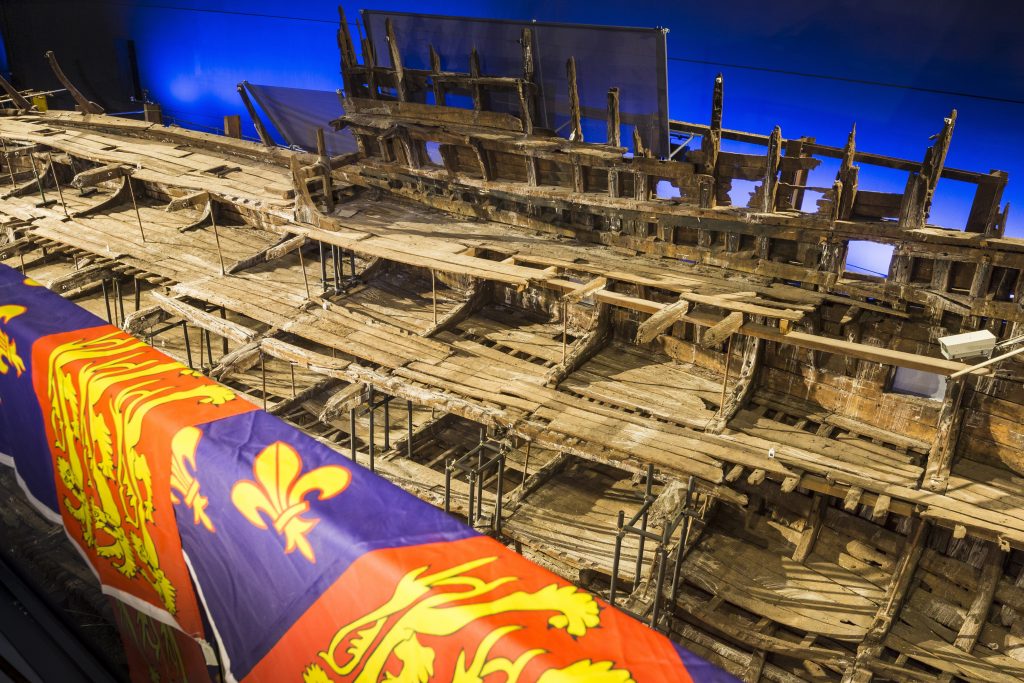
It can be hard to appreciate the dimensions of the Mary Rose but she was originally just 11m wide and it seems impossible that 500 men were shoehorned into her, along with food and drink for two weeks and arms for major conflict.
Perhaps rarely for a museum, almost every cabinet deserves inspection. There’s a magnificent cannon decorated with Tudor roses and a fleurs-de-lys; a wooden figurehead featuring the Mary Rose emblem; and, resembling an upturned tipi, the only surviving 16th-century crow’s nest.
Weapons include bronze and wrought-iron guns, grapefruit-sized lead shots (some weighing 11kg), fearsome pikes and bills (2m long and topped with unsettling spikes), and longbows made from staves of yew. There’s also a skeleton of the ship’s dog, Hatch, who was responsible for catching rats on board.
The human dimension is most moving and those behind the displays and interpretation have excelled themselves here, meshing together lives from clothing, teeth, bones and possessions. Scurvy, rickets and fractures abound; the master gunner suffered from painful abscesses and a carpenter who died in his late 30s was 1.72m tall and suffered from early arthritis.
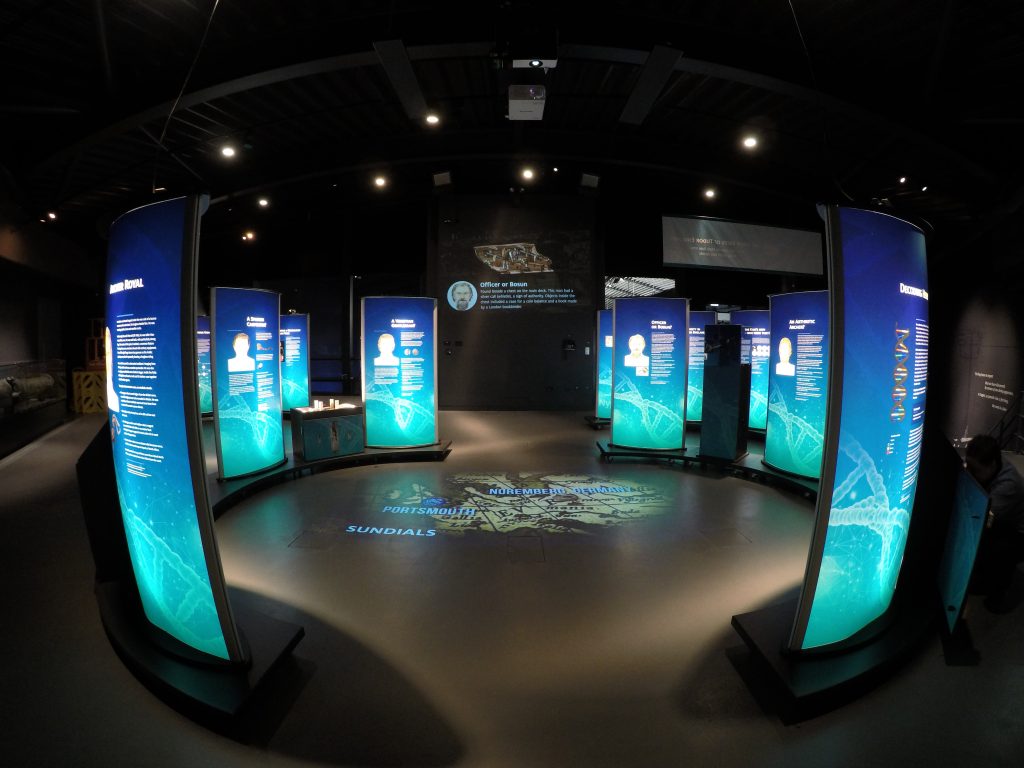
Oxygen values in his teeth and other samples indicate he grew up in one of the limestone areas of Spain. It’s hard not to notice how this Spanish carpenter’s tools – hacksaws, chisels and sharp-tipped levers – are disconcertingly similar to the knives and trepanning implements displayed in the surgeon’s glass case. Potions in the surgeon’s chest, recovered more or less intact, suggest the most common complaints among the crew were headaches, coughs, and trapped wind.
Just why Mary Rose was lost remains as murky as the waters into which she sank. Historians are inclined to dismiss the idea that the ship was top heavy with too many guns and soldiers on board.
A more concrete theory, supported by a Flemish sailor, who escaped from the sinking vessel and was the only contemporary eyewitness, proposes that a gust of wind hit her sails, making the ship unstable: with the gunports open, the ship was flooded and swallowed up by the pits in the surface of an aggressive sea.
The ship’s recovery is recounted, from its identification in 1836 by pioneering divers wondering why fishing nets kept getting snagged on the seabed to the first find of timbers in 1971. In 1982 the wreck was gingerly excised from the water, bolted and fastened within a vast lifted frame. Contemporary footage captures the disconcerting moment an echoing ‘clunk-kerplunk’ was heard, followed by a few bits of the wreck slipping back into the sea).
Visit HMS Victory
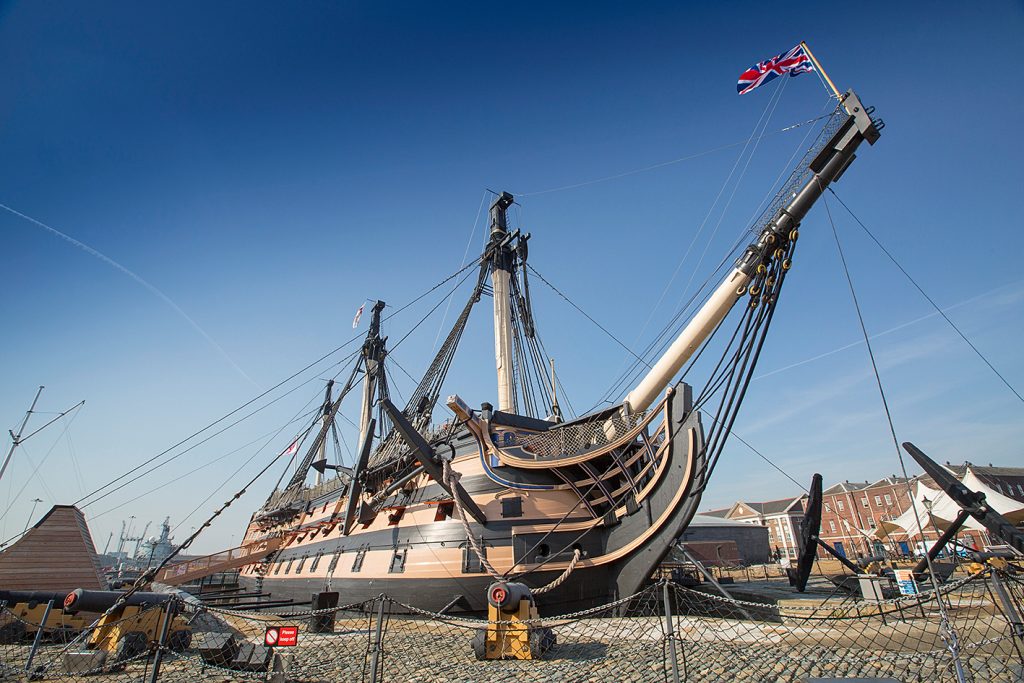
The second major site of interest at the Dockyard is HMS Victory, Nelson’s flagship, on which he was fatally wounded at the Battle of Trafalgar in 1805. In contrast to the experience of the Mary Rose, your walk around HMS Victory – accompanied by the pungent scent of treated wood – is more spartan.
The fact that a visit to Britain’s most famous warship can be a little underwhelming speaks volumes about just how outstanding the Mary Rose experience is.
To glean any insight, you must use the audio tour (though ever-friendly guides are on hand to throw the odd conversational titbit your way; they’ll make sure you don’t miss the polished plaque pinpointing the spot where Nelson was struck by a musket ball).
Nelson’s bed chamber, cloaked in blue and gold, reflects the stature and status of the man, as does his commode – the ultimate loo with a view – adjacent to his voluminous day study with its fine stucco mouldings, at the stern of the ship.
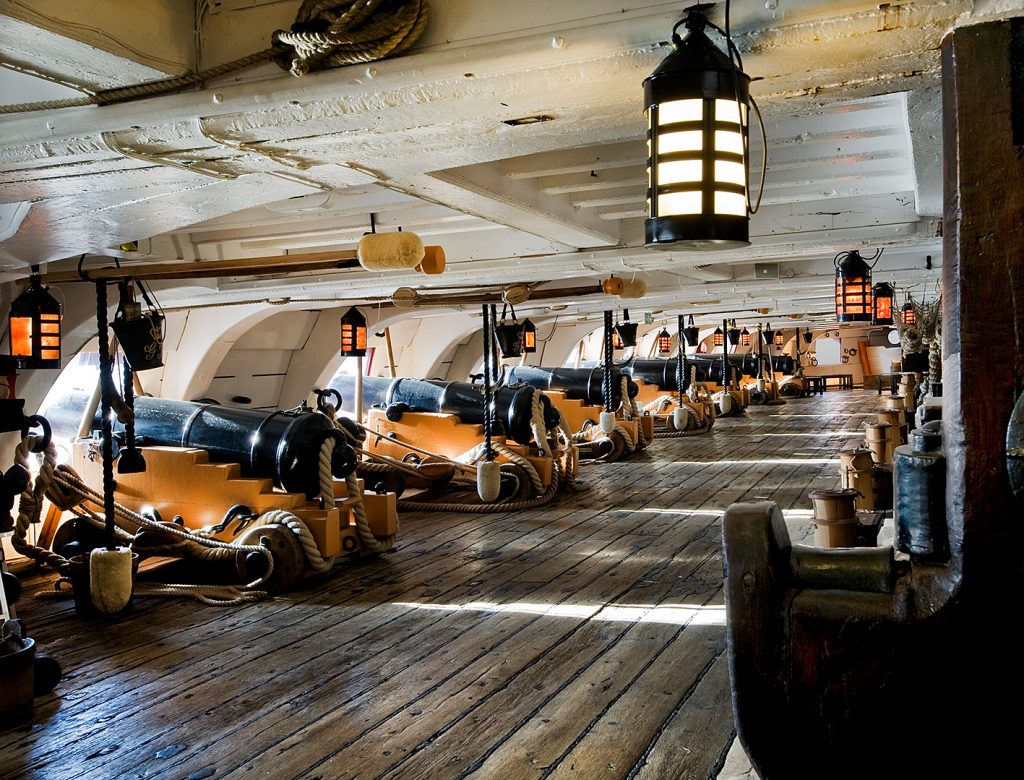
One thing you will undoubtedly notice is how low the ceilings are – on average 1.5m from floor to rafter in each deck. In the hold, where the weight of the decks and cannons above compress the oppressive head space even further, visitors often resemble bandy-legged sailors. Pity the ship’s carpenter whose workshop was tucked away here and who – when he could – stood 6ft 7in high.
The sprawling Dockyard, which is intertwined with a working naval base, contains other points of interest. You can explore traditional boat building techniques, or visit the Explosion Museum of Naval Firepower. A short ferry trip across the water takes you to the Royal Navy Submarine Museum, where you can walk the length of a WWII sub.
The Mary Rose, though, should be your first port of call. More than a ship, she is a time capsule, telling us about the values and priorities of Tudor times, and offering glimpses into the lives of those on board.
This is an extract, read the full feature in our August/September 2023 issue of Discover Britain, available to buy here.
Read more:



